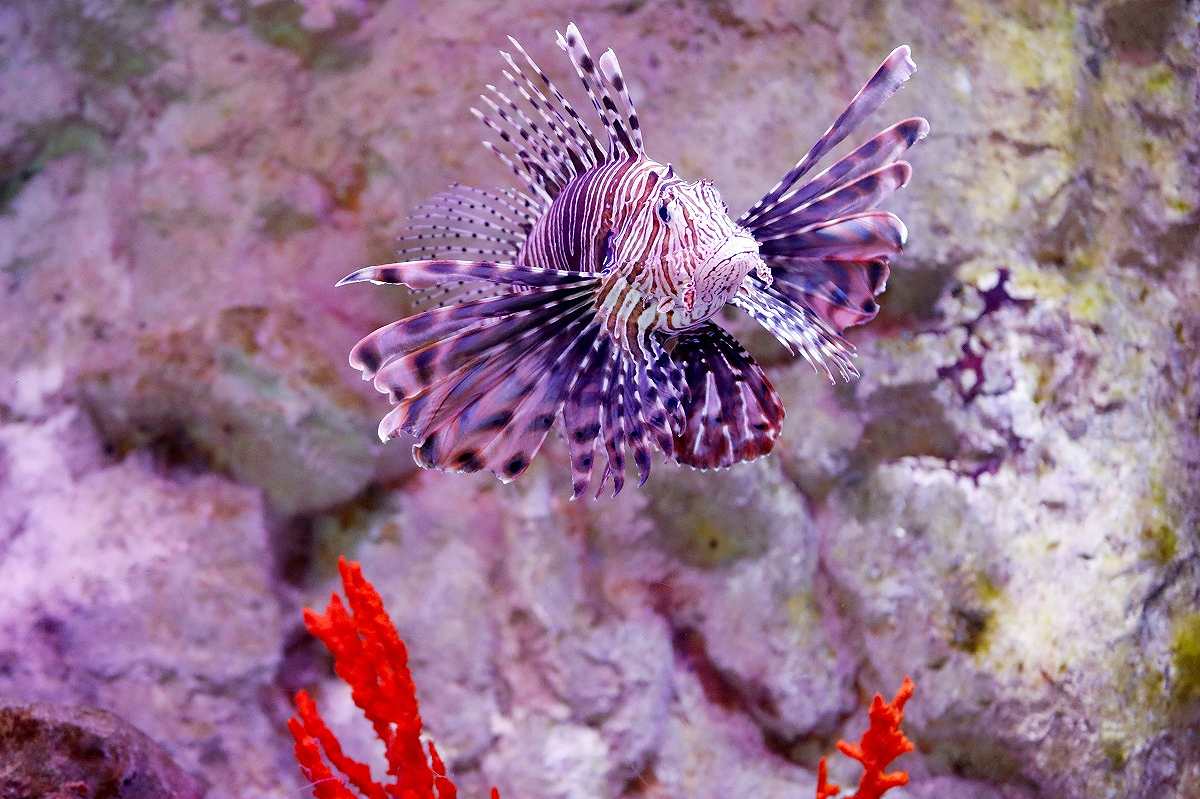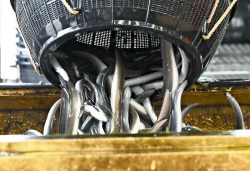
Lionfish originating from the western Indo-Pacific and caught in Boka Bay, swims in a tank of the Institute of Marine Biology as water temperatures in the Adriatic rise in Kotor, Montenegro, on March 13.
12:52 JST, March 28, 2024
DUBROVNIK, Croatia/KOTOR, Montenegro (Reuters) — For decades, Croatian fisherman Marko Kristic has cast his nets in the sparkling waters of the Adriatic Sea. Now an invasion of the Mediterranean parrotfish is endangering his traditional catch and his livelihood, he says.
Due to climate change and increased maritime traffic, the parrotfish, along with around 50 new species, has spread to the Adriatic, threatening the native fish population.
Kristic said the parrotfish was first spotted in the southern Adriatic about 15 years ago, but it has since become a common bycatch in his nets.
While enjoyed as a delicacy in areas where it is native, the parrotfish is not to the taste of locals around his village of Molunat in southern Croatia.
“I can’t sell it to anyone. The local population won’t eat this new fish,” Kristic said.
Nenad Antolovic, a researcher for the Dubrovnik-based Institute for Marine and Coastal Research, says fish stocks in the Adriatic, the northernmost arm of the Mediterranean, have slumped due to overfishing, climate change, and the invasion of new species.
“The Adriatic is changing, it is getting warmer. Because of that, new organisms appear. By [that] I mean fish and planktons and algae,” Antolovic said.
According to 2023 data from the Italian National Agency for new Technologies, Energy and Sustainable Economic Development, the Mediterranean is becoming the fastest-warming sea on the planet.
New fish species have arrived in the Mediterranean and the Adriatic from the Red Sea through the Suez Canal due to warmer waters or carried in the ballast tanks of ships, endangering the survival of around 460 native fish species, Antolovic said.
Some of the new fish are dangerous for humans, such as the poisonous lionfish or stonefish.
Last month, a fisherman from the Dubrovnik area caught a smalleye squaretail, a deep sea dweller, uncommon in the Adriatic.
In neighboring Montenegro, scientists from the Institute of Marine Biology in the coastal city of Kotor singled out the blue crab as an example of an invasive species.
“It arrived … about 20 years ago and is one of the worst invasive species in the Mediterranean,” said scientist Olivera Markovic.
Fishermen and scientists say stocks of crustaceans such as the green crab have been cut back, and in some places wiped out altogether.
“The population of the green crab … has been drastically reduced since the appearance of the blue crab,” Markovic said.
The rabbitfish, pufferfish and lionfish are thriving in warmer Adriatic waters along the Montenegrin coast, said Ilija Cetkovic, a researcher at the institute.
The biggest concern is the lionfish.
“[The lionfish] is currently the burning problem … it is predatory and inflicts considerable damage to ecosystems,” Cetkovic said.
"Science & Nature" POPULAR ARTICLE
-

Genome Study Reveals Milestone in History of Cat Domestication
-

Big Leap in Quest to Get to Bottom of Climate Ice Mystery
-

Security Camera Footage Vulnerable to Outside Access; Investigation Finds 3,000 Pieces Exposed Online
-

Paws on Parade: Nairobi’s Dogs Dazzle at ‘Pawchella’
-

Japanese Eels Escape New Regulation in Vote at CITES Meeting, Avoiding Higher Prices for Dealers and Diners
JN ACCESS RANKING
-

Keidanren Chairman Yoshinobu Tsutsui Visits Kashiwazaki-Kariwa Nuclear Power Plant; Inspects New Emergency Safety System
-

Imports of Rare Earths from China Facing Delays, May Be Caused by Deterioration of Japan-China Relations
-

University of Tokyo Professor Discusses Japanese Economic Security in Interview Ahead of Forum
-

Japan Pulls out of Vietnam Nuclear Project, Complicating Hanoi’s Power Plans
-

Govt Aims to Expand NISA Program Lineup, Abolish Age Restriction
























